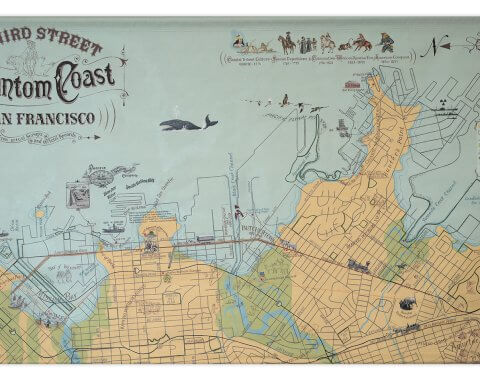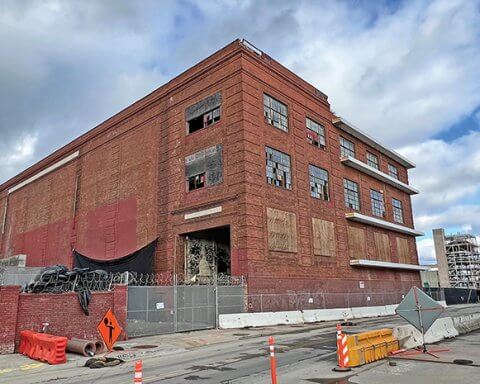The Good Samaritan Family Resource Center, on Potrero Avenue, has been a welcoming space for immigrants for 123 years. So, when Immigration and Customs Enforcement (ICE) agents showed up one morning while preschool and English-as-a-Second Language classes were in session it sent shock waves through the community.
It was January 26, one day after Donald Trump issued an executive order threatening to halt federal funds for sanctuary cities. Just hours later, Mayor Ed Lee, in his annual State of the City address, had doubled down on his support for maintaining San Francisco’s status as one.
“It was the next morning, shortly before 9 a.m., they show up,” said the center’s executive director Maria Paz, who wasn’t subtle about suggesting a connection in the timeline. “It reminded us of the new reality.”
Five ICE agents entered the building’s lobby, at least one armed with a gun and others with batons, searching for a sex offender slated for deportation they believed lived there. The agents were informed that the building wasn’t a residence, and were redirected to an affordable housing development further down the block. After congregating outside that apartment building for 10 minutes, they left without making an arrest.
ICE later admitted its agents had an incorrect address. The agency also informed the View that, as of press time, they hadn’t yet apprehended the suspect. Although ICE maintains a wanted list on its website, in this case, due to the nature of the ongoing investigation, the suspect’s name is being withheld.
The apartment building ICE had shown up at is managed by Mission Housing, which owns it through a partnership with Good Samaritan. The visit prompted Mission Housing Executive Director Sam Moss to believe he needed to step up to the challenges immigrants now face in the Trump era. After consulting La Raza Centro Legal and the American Civil Liberties Union, Moss drafted a notice that now appears on all of Mission Housing’s 38 buildings. It instructs law enforcement that no one on the property is trained to read or interpret warrants, and that all requests for entry must be directed to Mission Housing’s main office on Valencia Street.
“I decided it was our duty to act as a gatekeeper to protect our 3,000 tenants,” he said. “Anything I can do to stop ICE from harassing immigrant communities, I am happy to do that. I don’t expect a desk clerk to stand up to them, but I will.”
Moss has been working with others in the Mission to establish a housing family resource fund to assist people with living costs in case a household income earner is detained or deported.
The preschool incident drew attention beyond the City’s borders.
ICE’s own policies ban actions at “sensitive” places, such as churches and schools. Reports that such enforcements were occurring, including one outside a church shelter and another at a courthouse where a female immigrant was seeking a restraining order against an alleged abuser, prompted state lawmakers to ask ICE to clarify their procedures. In February, leaders of the California Assembly and Senate filed a Freedom of Information Act request for data about ICE actions that took place from January 20 to February 20, including all written material, such as memorandums and emails.
At the time of the ICE visit, 30 children were attending preschool, with 20 adults in the ESL class. Paz said it was fortunate most were already in class and not in the lobby. Still, he said some people on their way to the center saw the officers, got scared, and left.
The center, which was founded in 1894 by the Episcopalian Church, has been located at 1294 Potrero Avenue since 1908, two years after the earthquake destroyed its original home at Second and Harrison streets. It was the City’s first settlement house, assisting an assortment of mostly Scotch, Irish, German and other Europeans.
In the 1970s and 1980s, an influx of Spanish speakers began arriving, fleeing civil wars and economic conditions in Central America. When the Loma Prieta earthquake required replacement of its old building in 1989, the nonprofit reformed, with a primary emphasis on Spanish language immigrants. The 20 affordable units on the block were constructed at the same time.
In addition to the preschool, the 13,000-square foot center hosts several classrooms, and a kitchen with a healthy eating program.
According to Paz, a San Francisco native born to El Salvadoran immigrants, 3,000 immigrants a year attend Good Sam’s classes. While 70 percent of those are children, the curriculum is multi-generational. With toddlers in preschool downstairs, parents can attend classes upstairs, some of which focus on parenting.
“Strong families are key to children being healthy, happy and productive,” Paz said. “With early literacy, we emphasize the importance of parents reading and talking to children so they can be exposed to vocabulary.” Last year, 86 percent of the center’s ESL students demonstrated gains in post-testing, far above the state average of 65 percent.
The center runs a variety of field trips for older children. One program teaches kids how to ride and fix bicycles. Five sports programs are offered in the summer, with sliding scale charges that usually average $30 per child. “We have families that can’t afford Park and Rec fees or the YMCA,” Paz noted.
The connection with predominantly poorer immigrants has given the center’s three dozen employees a keen view into gentrification in the Mission. Whereas in previously years most of the clients resided in the Mission or Potrero Hill, increasing numbers of students are coming from Hunters Point and the Tenderloin
“The immigrant community often comes from poverty, so it is more resilient, but there is a lot of hardship right now,” said Paz. “We are seeing more and more families living in substandard housing. Many have to choose between doing laundry and eating. We feel our mission is more important then ever.”
Paz added that the organization’s maxim is to respect the human dignity of ever person who comes through its doors in helping them adjust to their new home. “In our history we’ve survived two earthquakes, along with ups and downs in the economy, primarily because our mission has been pretty steadfast all these years.”



